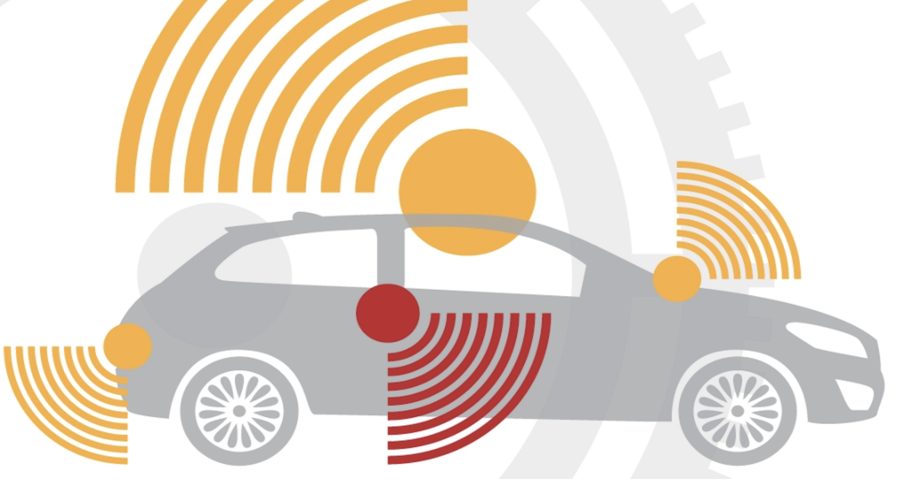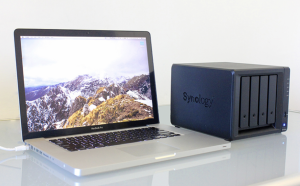The world of automotive has long been a ripe breeding ground for telematics – communicative devices which transmit data back and forth between two points. When big data and real-time analytics are thrown into the mix, the opportunities for innovation are endless.
Google’s driverless car may still be some way from mainstream release yet – the analyst firm IDC says it could be 2040 before you see one on the Jones’ driveway. And indeed, writing recently for Scientific American, Susan Kuchinskas remarked that cars are still “cognitive toddlers” – the speed at which they process algorithms cannot yet match the human brain.
But our four-wheeled steeds are certainly getting smarter, it cannot be denied. And the infrastructure supporting them, whether that’s in the factories, on the roads, or behind the rubber stamps, is progressing likewise, with the combined role of telematics and real time, big data analytics forming the key drivers.
What follows is a round-up some of the biggest recent innovations in the field that are either available on the market today, or will be imminently. As ever here at Big Data Insight Group, we are interested in discussing how these examples can be reapplied to other industries, either directly or indirectly. Email your thoughts to mark.young@nimbusninety.com and don’t forget to fill out our survey on monetising big data analytics.
Performance and fault monitoring; predictive warranty analysis
In our Applied Insight Series report on manufacturing released last year, we detailed the formerly-Swedish, now Chinese-owned car maker Volvo’s efforts in embedding performance monitoring within its R&D and cost forecasting processes.
The company now places hundreds of monitoring devices around the car which record the vibration and noise frequencies of individual components as well as the conditions – both ecological and driving related – that the car has been subjected to.
When the car comes to a Volvo engineer for maintenance or servicing, diagnostics checks are done on each of the components around the car. As well as helping the company to efficiently identify faults with that particular model, Volvo is able to cross analyse the component performance measures with the geo-location and driving condition data to build an understanding of any frailties that a component has in a particular environment, and the trends in how long a component will last and the particular faults it is likely to develop. Not only does this allow the company to recalibrate models for specific markets, it enables Volvo to gain an understanding of what its warranty liabilities are likely to be and when, allowing it to forecast its forward costs far more accurately.
For more information, read our Applied Insight Series report on big data within the manufacturing industry.
V2X – vehicle to vehicle/vehicle to infrastructure
Communication devices in cars aren’t just useful for feeding back information to the manufacturers either; it will be soon be commonplace to relay information from vehicle to vehicle (V2V), and vehicle to infrastructure (V2I) too.
The most oft-cited benefits of V2V pertain to preventing collisions. Many models on the market today already use sensors to perform assisted parking or to automatically brake or shut off the engine when a car comes too close to another vehicle or obstacle. With V2V, cars will be able to inform each other of their position and speed, enabling the drivers – or automated controls – to make interventions in order to prevent crashes. This could be a particularly useful for avoiding motorcycles which are often involved in crashes due to blind spots, as this short video from the European Car to Car Communication Consortium (C2CCC) illustrates. It could also help emergency services navigate traffic.
V2I can offer a similar service, allowing things like road works or precariously placed buildings to inform drivers of their whereabouts. That’s not all; V2I could be used to project advertisements or entertainment into cars, and inform drivers about future road maintenance. Of course, it could also be used by the police to get instant access to the details of speeding or uninsured drivers and such other follies. Wherever big data is involved, cries of ‘1984’ are never far from earshot. We should expect the development of V2X to be greeted by a familiar note.
Intelligent safety systems
To continue on the safety aspect of these developments, different experts and organisations quote different figures when they outline the percentages of road accidents where human error was primarily to blame. It’s almost always in the 90s though.
At some point we will all have to come to terms with the fact that – in this context at least – the computer might know best. Big data offers significant inroads for making cars safer – mostly through its ability to automate functionality. As discussed within the V2X section, on board vehicle systems can now inform each other of their whereabouts and of other hazards in the road so that drivers can avoid collisions. Mercedes-Benz’s Active Brake Assist performs a similar service on a solo basis but goes the extra mile in building up an understanding of the distance levels between traffic that the driver wishes to maintain and autonomously braking when the distance is reduced.
Mercedes-Benz also has another system called Attention Assist which is rather smart too. The system ‘learns’ the drivers usual habits such as the speed at which they change gears, brake, switch lanes and so on and alerts the driver with a visual and acoustic warning sign if they begin to slow down or stray out of a lane. It is hoped that the system will enable sleepy drivers to better understand when they need to take a break for an accident occurs.
Unfortunately, it may be impossible to completely eradicate accidents, but big data can help in the aftermath of one too. GM’s OnStar and BMW’s ConnectedDrive systems both feature intelligent crash reporting systems, which automatically triggers a call through to emergency services in the event of a crash. These relay your precise location and details of your car’s colour and model while a BMW call centre operative simultaneously calls you to check on the details such as any injuries that have been sustained and the positioning of passengers within the car.
The latest in satellite navigation
GPS and Satellite Navigation systems still use Dijkstra’s Algorithm – invented in the 1950s – as their chosen method of calculating the shortest distance between A and B. But as well as correctly (except for the occasional befuddling hiccough) performing this in real time, they have now added a host of new features which utilise a host of additional data sources to perform additional benefits as well their primary directional functionality. Live traffic visualisations on the roads up ahead are one particularly simple yet effective means of increasing the information available to a driver without majorly impacting on concentration levels, or impacting upon the primary function of the satellite navigation.
But the two functions are still essentially separate – they are simply packaged together through a single interface. What does bring ‘Sat Nav’ systems into the realm of ‘big data’ is where they collate other data from other sources and pull it all into the mix to give guidance based on real time conditions. For instance, a team from Newcastle University has been part of a cross-European ‘Euro Compass4D’ project to create a new system which allows drivers on inner-city roads to identify the best constant speed to drive at throughout the city in order to keep moving without having to stop. This therefore ensures that traffic keeps flowing which eases congestion and also has environmental benefits since a lot of pollution and indeed fuel usage is attributed to stopping and starting.
As Phil Blythe, Professor of Intelligent Transport Systems at Newcastle University explains: “The system might advise a driver that if they travel at 24mph they will hit the next four sets of traffic lights on green.
“Traffic management systems are already in place across the city to improve traffic flow but what’s unique about this trial is that we will be giving information directly to the driver.
Black box insurance
In many different customer-based applications of big data, it’s the ability to serve the individual, rather than the collective, that offers the evolutionary value. ‘Black box’ insurance certainly fits that mould.
Insurance companies have always been driven by data with complicated algorithms for weighing up your demographic profile, car use, previous driving performance and more in order to calculate the prices of their policies. Now though, black box insurance takes that one step further. By fitting a small device into the car, usually placed inconspicuously into the glove box, the insurer can monitor constant streams of data on how the car is being driven, including speed, speed around corners, total mileage, the time of day it is driven, where it is parked and so on. Those that drive within the confines of what the insurer deems ‘safe’ are given cheaper premiums in the next month or quarter while those that fail to suppress their inner F1 driver pay more.
What’s more, most insurers offer this type of policy are able to send automated text messages and emails to policy holders providing updates on how they are driving and advice or warnings in order to help them keep their premiums down.
Google’s self driving car
We said at the start of the article that the IDC doesn’t think the driverless car will be commercially available until 2040. However, Google itself has said that it thinks they could be available within three to five years, so that’s why it gets a mention here.
In fact, despite any sense of gluckshmerz (the polar antonym of schadenfreude, meaning to take displeasure in the successes of other) one might feel about Google, it would be impossible to end this piece without a word on what surely must be the biggest innovation in automotive to date: the car that drives itself.
It is an innovation that brings together much of what we’ve explored above. With a primarily Toyota Prius-based prototype fleet, Google has already completed more than 300,000 miles – enough to cover every single road in the United Kingdom and Ireland combined – accident free (except for human errors!). It is certainly feasible and when it does become commercially available there will be a huge scope in its ability to improve people’s lives. Allowing those that are unable to drive to get around, reducing the element of human error in accidents and putting a stop to the farce that is parking charges, are just a few of the foreseeable benefits it has to offer.
With its Maps, image base, geo-location tagging, search functionality and all encompassing knowledge of local infrastructure across the majority of the developed world, Google has all of the ingredients to make it work and is able to bring these ingredients together through its big data analytics and processing capacity.
It still sounds ridiculous when you say it out loud, but driverless cars are on the horizon and will be in our lives before too long. The lesson that we should all learn is that the audacious is now achievable; big data enables the brave. And there’s no finer place to look than the world of automotive if you need inspiration.

